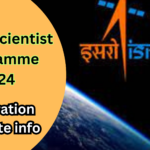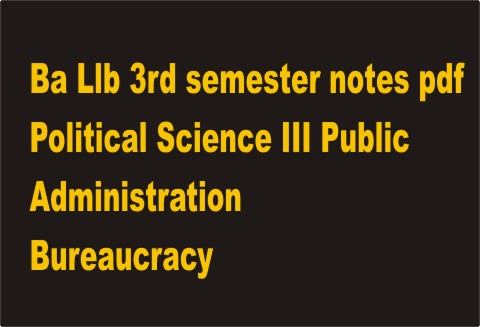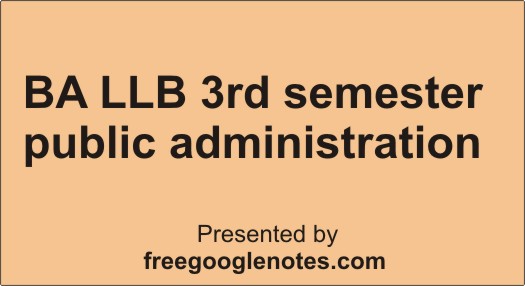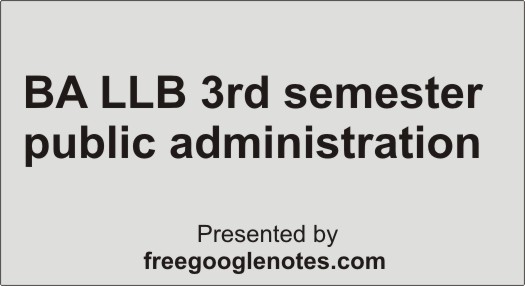Table of Contents
Chandragupta Maurya
In this article you will read about Chandragupta, Describe the Mauryan Administration on the basis of Kautilya’s Arthashastra and the accounts of Megasthenes, Discuss the Administrative System of ChandraGupta Maurya,
Question. 1. Describe the Mauryan Administration on the basis of Kautilya’s Arthashastra and the accounts of Megasthenes.
Answer. Magasthanese was the first Greek historian who stayed at the court of Chandra Gupta for five years (302 B.C. – 298 B.C.) as an envoy of Sleucus. He wrote about India in detail in his book Indica. Unfortunately the books is not available now. Other Greek authors have generously quoted from Indica. Magasthanese devolt on almost all aspects of Indian society the chief being : Indian society, the monarch, the royal palace, the court, the royal recreations, the capital Patliputra, and the army. We have borrowed the account and describe it in brief in the following lines –
(1) The Indian Society – Magasthanese has mentioned seven castes in the Indian society of the period. Probably he divides the society into seven divisions and calls them castes. He says that inter-caste marriage was taboo. The divisions were –
(a) Brahmins and the thinker, Their number was small but were highly respected. Their function was to perform Yagya. The state exempted them from taxes.
(b)Krishak, They were large in numbers tilled the land, and paid land revenue equal to one-fourth of their agricultural produce
(c) Shepherd and Hunters – Shepherds raised cattle for milk but hunters killed wild animals.
(d)Traders and workers – Traders were rich and engaged in various trades. They paid handsomely to the state. Workers served other people.
Fighters – They were always engaged in fighting. The state bore
their expenses. During nights they made merry.
(f)Inspector- Inspected various departments of the state and submitted their report to the king.
(g), Ministers and Councilors – Their number was the smallest. They were wise, able and educated people and worked at higher positions in the state.
(2) The Maurya King- The king spent most of his time at the court and despensed justice. He feared for his life and did not sleep for more than two nights in a room. His bodyguards were women and rarely went out of the royal palace.
(3) Royal Palace – There were a number of royal palaces in Patliputra with extensive gardens and pools around them. Peacocks and pegeons swarmed in the courtyards and the fish moved about in the pools.
(4)The Court – Magasthanese records that Chandra Gupta Maurya kept a glorious court. Vessals of silver and gold, inlaid wooden work and sinest sparkling dresses, added to the beauty of the court. The king sat in the court in all of his finery..
(5) Royal Recreations – The emperor was fond of hunting, drew recreation from the bouts of the wrestlers, house-races and fights with wild animals.
(6) Patliputra – Magasthanese gives a detailed description of the capital city of Patliputra. He says that Patliputra was a large city standing on the confluence of rivers Ganga and Son. It had a deep moat around to save it against invasion. Six sub-committees, described earlier, looked into the local administration of the city.
· (7) The Management of the Army – He writes that Chandra Gupta Maurya’s army was large and powerful. A 30 member war-council managed its affairs. The council has been described earlier in this chapter.
Kautilya and his Arthshastra
Kautilyas, prime minister of Chandra Gupta Maurya, was an extra ordinary man. He made Chandra Gupta Maurya an emperor and master OT a large empire. His life has been discussed briefly in reference to the exploits and success of Chandra Gupta Maurya carlier in this chapter. In the following lines we shall study his famed political treatise, Arihshastra –
(1)The King – The king should be a despotic ruler but must heed
to the council of his ministers and brahmins. The welfare of his people is the chief function of a king which amounts to his own good. He advises the king to keep a large powerful army to defend against foreign invasion and keep peace within. He invokes the king to conquer others. Kingdoms to enhance his glory. The king should not distinguish between suitable or unsuitable steps taken in the direction of public welfare.
(2) Minister – The king should freely avail counsel of his ministers. The minister should be wise, sincere, experienced, loyal and beyond any reproach. In spite of this the monarch should not play in the hands of his ministers but must take decisions independently on merits. The secrets of the state should remain confined with the king and his council of his ministers.
(3) The Secret-service – Kautilya laid much stress on strengthening the secret service and the king should know all the events-small or tig. This may be possible through a well-organized service to which the king must interest himself. Kautilya favored the inclusion of women in the secret service.
(4) Provincial Administration – The king should divide the empire into provinces for efficient administration and appoint governors, as his representatives. Provinces should have districts and district villages.)
(5) Public Welfare – Kautilya impresses upon the king to perform his duties towards public welfare in all earnestness. Poverty was told as the greatest curse. He should mitigate their suffering and make their life happier.
Question. 2. Discuss the Administrative System of Chandra Gupta Maurya.
Answer. Administrative System of Chandra Gupta Maurya
Besides being a brave and skilled soldiers and victor, Chandra Gupta was an accomplished administrator. One can see glimpses of his system of administration from the book Indica by Magasthenese and Arthshastra by Kautilya. The historians admire him-for his proficient ideal administration which the successive rulers followed with some minor modifications. We observe three main features of his administration, namely : (1) Central administration, (2) Provincial administration and (3) Local administration.
1. Central Administration – The system of a administration ran by the king through his ministers from the capital was called Central
Administration. It included : the king, Council of ministers, Judiciary, Defence, Police, Secret Service and Public Welfare. We will study them in the following lines :
(1)The king- The administration ran by Chandra Gupta was centrally controlled in essence : The entire country was covered under it. The king was a despot and centre of the system. He made the laws, implemented them, and judged them and was the last word into himself. He organized the army and led the forces to the battlefield. “The known facts about Chandra Gupta administration prove that he was a steru despot”-V. A. Smith. The king had such powers in principle but particularly he enjoyed them in consultation with the Council of ministers. He was bound by the tradition and ethical values. Kautilya has discussed the functions of the king in his book and enjoyed upon him to perform welfare activities for his people without which he cannot absolve himself of the debt he owes to them. Thus we see that Chandra Gupta Maurya was an enlightened despot.
(2) Council of Ministers – Kautilya hold that the king, and the council of ministers were complimentary. The king appointed his ministers to the Council in view of their wisdom, sagacity and character and drew their salary from the state. The decision were taken by majority by the monarch could over rule them. It appears that the session of the council of ministers was called in emergent cases whereas for routine matters the prime minister, Purohit, the Senapati and etc. could suffice.
(3) Judiciary, Chandra Gupta Maurya set up the best system of Judiciary in consultation with his prime minister Chanakya. The rulers laid down for the various functionaries in the Judicial system are still relevant. The monarch himself was the supreme judge. Others, under him, were senior or junior judges. Separate judges were appointed for the janapadas and cities known as Rajuk, and Vyavharek – mahamtra respectively. ThePanchayats decided small cause cases in the villages. Civil Courts called the Dharamsthiya and the criminal courts the Kantakshodhana. Decisions taken at lower courts were heard in appelate courts.
Punishments were severe to lower the crime rates. Kautilya mentions of eighteen types of sentences. Fines, amputations and death sentences were generally awarded. The crimes were unheard of and people did not lock their house.
(4)Military Organization – Chandra Gupta Maurya arranged his med forces in four divisions namely infantory, cavalry, elephants and chariots. Besides he had naval forces. In the detailed account by Masasthencse army was comprised of six lakhs infantory, thirty thousand cavalry, nine thousand elephants and eight thousand chariots. He maintained such a large army because he was an ambitious ruler who vanquished a number of states and raised a large and strong empire. It was an age of armed-forces. He defeated the Yavanas and drew them out of the country, destroyed the Nanda dynasty, and established peace on the strength of his army
The emperor was the supreme commander and led the army to battlefield. He set up a war-council, composed of 30 members, to run the administration of the Defence department. The war council had six sub-committees of sive member cach. A sub-committee was incharge of a particular division of the army. The fifth was responsible for the up-keep of the navy and the sixth for adequate provisions to the entire armed forces.
The above mentioned were the standing forces and paid their salaries from the state treasury. “Chandra Gupta Maurya maintained a large standing army directly paid by the crown more efficient than Akbars militia”. V.A. Smith.
(5)Police and Secret Service – Police constables were called Rakshin because they defended the people. The main function of the police was to arrest the criminals and get them punished. However, in some crimes, ordinarily, it was difficult to detect them. Secret service was therefore pressed into service which had a wide nct-work all over the empire. The secret service had two departments : (1) Stationary, and (2) Movable. The detectives of the stationary department were posted at a place and collected intelligence from it. But the detectives of the second department moved from one place to another and gathered information about persons and movable institutions, organizations, main feature of the secret service was that it had enrolled women as spies. In this way Chandra Gupta Maurya could know about the smallest thing, or a treachery, or a conspiracy hetched against him well in time.
(6) Land revenue and irrigation – Land revenue was the main source-of-income of the state. The farmers paid one fourth of their agricultural produce as land revenue but in particular circumstances
the government levied one eighth as tax. The revenue could be paid in cash or kind. Chandra Gupta Maurya remembered that India is an agricultural country. He therefore made proper arrangements for irrigation, which was carried through canals, tanks, ponds and wells, Irrigation from canals was taxed. His governor, Pushya Gupta, dug a large lake, Sudarshana, in Saurashtra for irrigation.
(7)Welfare activities – Chandra Gupta Maurya took keen interest in doing welfare activities for the people. Some of them are mentioned
below :
(a) Means of Transport – He arranged systematic transport, constructed long road and connected cities with them, planted shadowy trees built inns along sides of the roads and constructed bridges across the rivers.
(b) Health – He paid attention to the situation of the cities, appointed inspectors to check the purity of the eatables, opened clinics and hospitals for the sick and appointed physicians and provided free medicines,
(c)Education – Purohit was responsible for education. The state provided grants for the expenses of educational institution. Besides, he granted pensions to widows, handicapped orphans and destitutes.
2. Provincial Administration – The Mauryan Empire was a large kingdom divided into provinces. The emperor put each province under the charge of a governor who was an efficient and reliable person. The governors were directly accountable to the emperor. The strategic provinces were either placed under his charge or the princes were appointed to them. They maintained law and administration in order to keep peace and arranged armed troups to keep the emperor when demanded. The emperor kept a strict surveillance on the functions of the governors. Who were permanently shadowed by the security service people. They sent despatches on the affairs of the states to the emperor regularly. “The control of the Mauryan Central government even over distant provinces and subordinate oflicials appears to have been more stringent than that exercised by Akbar”. V.S. Smith,
3. Local Administration – The term local administration refers to the internal administration of a city or a village. Like modern Panchayatiraj system .Chandra Gupta Maurya enjoined upon the people to run administration of their city or village themselves. The people
were provided sufficient liberty to run the administration. In this way we observe that Chandra Gupta Maurya’s local administration was the precurior of the present day Panchayatiraj system. Following are the brief features of the local administration of the villages and cities :
(a) Villages — Village is the smallest unit in the official administration. The gramik was an elected who functioned without a salary. The gramsabha helped him in discharging his duties towards the welfare of the village. Besides each village had a government representative. Gop was a senior elected official over the gramiks. He looked after the administration of a cluster of 5 to 10 villages. Sthanak, over Gops, was accountable for eight hundred villages and Samaharta, the district incharge, was senior sthaniks.
(b) Cities – The city administration, during the reign of Chandra Gupta Maurya, was remarkable in many respects. Magasthenese, who remained for most of his stay in India at Patiliputra, the capital city, describes in detail the city administration in his book Indica. From his description of Patiliputra. We can safely assume that other big cities of the empire might have followed the Patiliputra system.
Nagaradhyaksh was the chief of the city administration (Chanakya calls him Paur-vyovharik) similar to modern Mayor. Sic sub-committees, of 5 members each, ran the entire local administration of the city. The committees were incharges of their departments. Local administration in cities is still run through sub-committees. Following is the brief description of the functions of these sub committees :- V
(1) Shilp Kala Committee – The sub-committee managed the spread of shilp and development of the industrial traders. It functioned to fix the wages of the artisans, provision of raw material and its inspection, and arrange security to the workers.
(2) Foreign-travel sub committee – The main function of the committee was to provide all possible amenities to the foreigners which included their lodging, boarding, food, medical treatment, and in case of death arranged inheriteņce to reach their rightful heirs.
(3) Census sub committee – It kept birth and death record like present day census department.
(4) Trade sub committee – To work for the development of trade; to check weights and measures; and to determine the rates of the commodities for sale.
(5) Sub-committee for industries — To develop the industries, to standardize the products, not to let old things mix with new, to arrange for the mandies, and to punish the offenders who sold things without proper permission of the government,
(6) TAx sub committee – The sub-committee received taxes which was one-tenth of the salo-price. Besides toll-tax was strictly levied and charged.
We learn from the study of Central, provincial and local administrations that “Maurya government was highly organized and thoroughly efficient autocracy, capable of controlling an empire more extensive than Akbar’s. It anticipated in many respects the institutions of modern times”. V.A. Smith.
Q.3. Discuss the administrative system of Ashoka.
Ans. Ashoka succeeded his father in 273 B.C. but was crowned four year later possibly he had to battle his brothers which delayed his coronation. According to both literature he killed 99 brothers which appears to be an exaggerated number simply to prove that such a cruel man under the influence of Buddhism, was transformed into an exemplary form of piety, kindness, love, family and non-violence. In fact the Ashokan pillars of the later period prove that some of Ashoka’s brother had lived.
Extension of Ashokan Empire – Ashoka followed in the foot-steps of his forefathers and set out on the adventerous expedition of other kingdoms.
(1)Victory over Kashmir – He invaded Kashmir, defeated it and annexed it into his empire.
(2) Victory over Kalinga – Modern Orissa included into the Kalinga kingdom of Ashokan period. It was a powerful kingdom. Ashoka invaded it with a large army, fought the severe and bitter battle, defeated it, and annexed it into the Magadhan Empire.
Consequences of the Kalinga victory – Far-reaching were the consequences of the Kalinga victory which changed the course of the Indian history,
(a) Extension of the borders of the Magadhan Empire – The empire extended even further. It was from the Hindukush to Bay of Bengal and from the Himalayas to Mysore.
(b) Bloodiest battle — Estimatedly several lakh people died in the
battle which included common people after the battle epidemic broke out which increased the toll of the dead.
(c) Ashoka professed Buddhism – The battle changed Ashoka entirely.
He vowed not to get to war-in-future.
He took to Buddhism and sent the message of peace and non-violence in and out of the country.
He forsook hunting and eating of meat.
“Kalinga war proved a turning point in the career of Ashoka and produced results of far-reaching consequences in the history of India and of the whole world.” H.C. Roy Chaudhari.
Ashoka’s system of administration – Ashoka inherited a large empire. In the beginning, he followed in the footsteps of Chandra Gupta Maurya and did not make any departure from the previous system of administration. The king continued to be a despot, central, provincial and local administration continued to work as usual.
Ideal of Ashoka’s administration – The Kalinga victory compelled Ashoka to make some changes in the basics of his administration. The changes were :
(1) To think about the welfare of the people – He treated the people as his children and cared for their welfare as a father does for his children.
2 Change in Administration – He made certain changes in the system of’administration in view of his avowed change of heart, appointed special officials called ‘Dharmamahamatra’ who supervised the welfare activities other officials preached religion in addition to their duties.
(3) Change in the Judicial system – Severe punishments were removed. He tried to inclucate moral awakening among the convicts to effect their change of hearts. The judges. (Rajukas) were empowered to punish or reward freely.
(4) Development of moral values – Ashoka sought to make environment conductive for the development of moral values. He forbade all customs or festivals where drinks and meat were consumed. Dharam Sabhas replaced them.
(5) Public Welfare – Ashoka built roads, planted trees along side ordered for the construction of the inns, dug wells, opened hospitals for the treatment of animals. “If Ashoka had not been capable, he would have not ruled his huge empire with success for forty years and
left behind a name which is still in the memory of men after the lapse of more than two millenniums”. V. A. Smith. Ashoka’s Religion
Differences are there as to his religion. Some say that he believed in the brahmin religion, others hold that he was a Buddhist still some others claim that he professed Jainism. Radha Kumud Mukherjee and Smith think that he was a humanist.
After having studied the life of Ashoka it can be deduced that he cannot be framed into the bounds of a prescribed faith or religion. His thinking changed with the change of years of his life. He held brahminic faith at the time of his invasion on Kalinga and courted to non-violence as
the consequence of the war savagery. Jainism and Buddhism were the two religions who took non-violence as a cardinal principle of the regions but Ashoka was driven away from Jainism bécause of its strictness so he embarrassed Buddhism in the ninth year of his coronation…
Ashoka’s concept of religion soon enlarged and he inclined towards humanism. He has not bound to a religion envisaged a new faith known as Ashoka’s dhamma, and wished to relieve all human beings of their sufferings.
Principles of Ashoka’s dhamma or Universal Religion – He included good features of all religions into his dhamma and termed it himself the sum and substance of all religions, took his faith he intended to reform human society. He tried to reform life after death. His dhamma drew heavily from, the Buddhism which he had embraced. Chief features of his dhamma were
(1) Stress on moral values – He laid stress on the moral values an individual should assume. The basis of the expression of the values was family. Family happiness increases with respecting the parents and teacher. He asks to help the old and treat the relatives and slaves suitably and thinks kindness and toleration have importance place in the life of a man.
(2) Non-violence – Ashoka’s dhamma stood on the principle of non-violence. The principle not only influences the life of an individual but influences the political decisions. He declared not to go to war: forsook wine, meat and animal sacrifice.
(3) Religious toleration – He was a tolerant man and respected
all religions. He did not criticize any other religion in his dhamma and
vocated lour paths : (a) all religious are same in essence, (b) do not triticize any religion, (c) talk to the learned men, and (d) recognize the spirit of all religions.
(4) Pure life – He forced importance to the purity in life. A man kuld therefore leave anger, lust, greed, desire, jealousy and wildness and adopt the truth and sacrifice.
(5) Opposed religious rituals – Ashoka’s religion professes simple tife Religious rituals awaken pride in mar and desist him from simple and pure life. He did not attach importance to the purohits so that rituals might not be encouraged.
(6) Self-examination – He advocated that an individual should self-examine himself daily. This produces derision against sins and love
for virtues.









